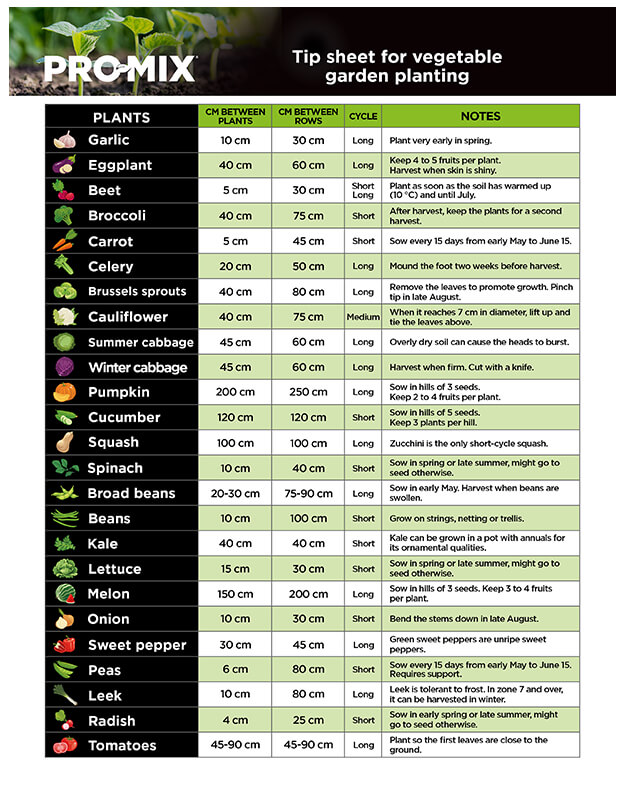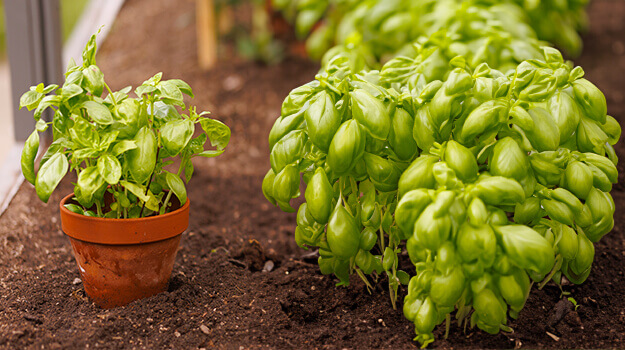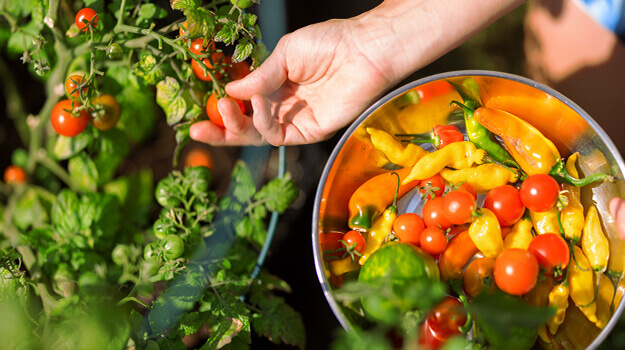
Are your seedlings just started and looking promising? Don’t put away unused pots and seeds yet! With the following tips, you will be able to get the most out of your vegetable garden.
How to plan a high-yielding vegetable garden
Did you know that it is possible to extend the harvest period for most vegetables, fruits and aromatic herbs? It's the easy way to make the most of the performance of your vegetable garden.
Considering that any soil left bare in the vegetable garden only benefits weeds, it is possible to have simple strategies that will allow you to cultivate each plot, from the beginning to the end of the gardening season.
This obviously takes a bit of planning.
Start by selecting the vegetables that you want to grow. Before drawing up the plan for your vegetable garden, draw up a table to classify each plant according to its category.
- Fast-growing and early-maturing
- Slow-growing and late-maturing
Also determine whether the vegetable offers the possibility of successive sowing, and with which plant it can coexist well. (We will explain later the principle of cohabitation, which aims at the production of a high-yielding vegetable garden.)
The advantages of spreading out harvests
The first advantage is obviously to extend the harvest period. The second, just as interesting, is that you won’t find yourself at one point with too many fresh vegetables to eat all at once, and then nothing.
It’s very easy to do this with beans and lettuce. Planting those seeds several weeks apart will give you consecutive harvests if the weather permits. Do this successive planting with other vegetable plants at the start of the season. Then, as the weeks go by, you will gradually have to turn to fast-growing vegetables or herbs that will reach maturity before the risk of frost.
How to spread out the summer vegetable harvest
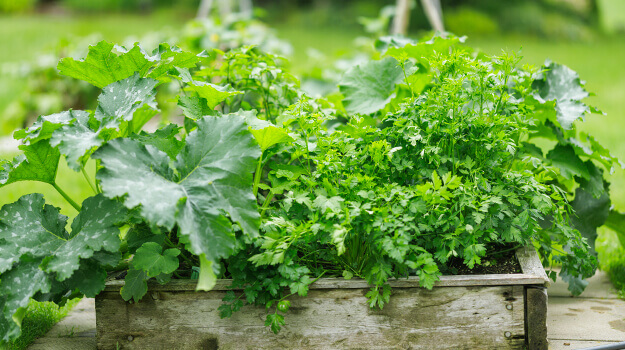
Summer vegetables, such as tomatoes, eggplants, peppers and cucurbits (squash family), take longer to mature. Their life cycle is longer. They therefore occupy the same space in the vegetable garden for 4 to 6 months, depending on the variety.
Often planted in the vegetable garden in May, they will start producing in July or August, before dying in the fall. They are less suited to harvest spreading practices. However, you can harvest over a longer period by planting both early and late varieties.
Tomatoes, for example, can be classified according to 5 levels of growth:
- Very early varieties produce in less than 55 days: Frontenac, Carnival
- Early varieties produce after 55 to 65 days: Muscat, Montmaurin 1920
- Mid-season tomatoes will be harvested after 65 to 80 days: Chianti rose, Monstrueuse de Lyon
- Late tomatoes require between 80 and 100 days: Mémé de Beauce, Domingo
- Very late varieties need 100 days or more: Yamali Blue, Marvel Striped
What is counter-planting
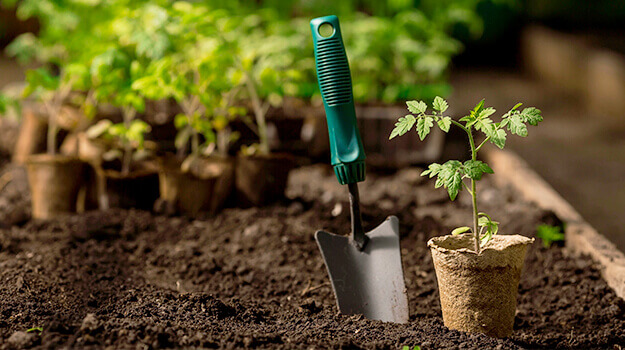
Counter-planting… Does the word raise your eyebrows?
Don’t be fooled by the name of this technique which might suggest that it is counter-productive.
Counter-planting comes from traditional market gardening. It was practiced around Paris in the 18th century for purely commercial purposes. Not to feed the population, but to enrich themselves.
It owes its great comeback to the term “permaculture”, which features the growth of agricultural ecosystems in a self-sufficient and sustainable way. This is an effective and effortless way to boost the productivity of a vegetable garden without having to expand it. The crops follow one another at an accelerated speed, to the point where we can hope to double the harvest.
The principle consists in sowing or planting repeatedly near vegetables which are at the very beginning of their growth or at the end of production. The objective is to optimize space – and divert time, which in gardening is more limited than ever. You will obtain the best possible harvest.
It is a form of association of cultures just like companion planting. This association, however, strictly aims at yield and increased production.
How to counter-plant
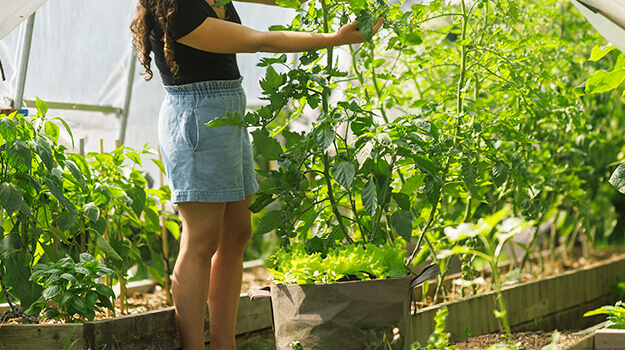
Counter-planting is practiced in two ways:
- Different varieties of vegetables are sown or planted next to each other simultaneously. You choose short-cycle vegetables and long-cycle vegetables. One reaches maturity early while the other continues its development, reaching separate phases and ensuring continuous production in the same area of the garden.
- Vegetable plants of different varieties are sown or planted at separate times. You sow or plant a new vegetable close to another which is reaching the end of its growth. The new one will eventually replace the plant that is no longer producing, without having to wait for space to become available.
Counter-planting in practice
Here are some concrete examples of counter-planting.
Growing tomatoes at the end of the season
When the tomatoes have slowed down their production, you can strip the leaves at the bottom to plant quick-growing lettuce, spinach, radishes, basil or parsley at their base. The tomato plants will continue to produce but the young plants will benefit from the shade provided in hot summer weather.
In more temperate regions, where peppers can mature at the end of the season, counter-planting can also be practiced at their base. The same goes for eggplants.
Growing zucchinis at the start of the season
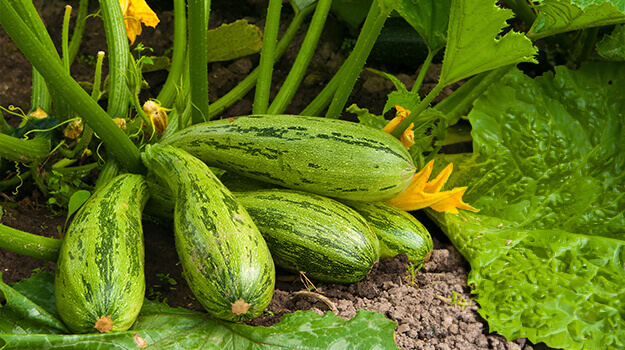
Another example: at the start of the season, you can sow lettuce or other fast-growing vegetable plants alongside zucchinis. The short-cycle vegetables will be harvested and will disappear just before the zucchinis take over all the space that they need.
In doing so, the same space will have allowed you to harvest a few kilos of zucchinis as well as some nice lettuces.
Interplanting: producing more while working less
How can a vegetable garden be both more productive and require less maintenance? Simply because well-chosen plants planted in the right place benefit from each other’s presence.
Interplanting would hardly be profitable in large planting areas due to the time investment it would require. However, it is a winning option for owners of small vegetable gardens. The plants only coexist for a short time but they allow for an efficient succession of crops.
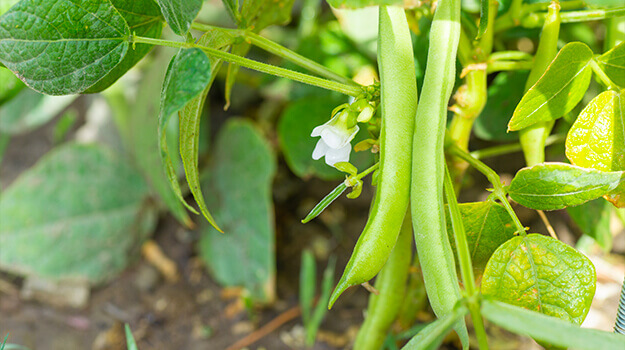
Here's how:
- Plants protect each other. Although the goal here is purely productivity, some benefits of companion planting are produced. For example, a mature plant will provide a shaded space sheltered from the winds where a young plant can develop.
- In the vegetable garden, the space is occupied by different plants at various stages of development. Because the soil is less bare with more plants covering it, mulching is not as necessary, as is pulling out weeds.
- Rooting depth varies depending on the vegetable variety. Planting different plants in the same space allows them to draw nutrients from various levels in the soil, whether near the surface or in deeper.
- By planting legumes (beans, peas, etc.) with other plants, you improve the quality of the planting soil. These plants can capture atmospheric nitrogen and then return it as fertilizer to the soil.
- Some companion plants can attract beneficial insects and pollinators, deter pests, and function as insect repellents.
PLEASE NOTE: Regardless of the method used to increase the productivity of the vegetable garden, it is better to consider the planting space that each plant needs. Secondary crops must not harm the main crop. Planting too closely might lead to disease development.
Master the art of successive sowing
Successive sowing is a great way to make the dedicated space for planting profitable and take advantage of the full potential of your vegetable garden. The number of vegetables and herbs you can harvest over the course of the season obviously depends on how long it lasts in your area and how quickly each chosen crop matures.
How to do successive sowing?
When planting indoors, only plant a small batch of each seed. Then, a few weeks later, sow another batch, and so on. That way, you can harvest a new batch of vegetables every few weeks, instead of all at once.
Accordingly, in the same plot of the vegetable garden, you can follow a harvest of spring vegetables (spinach, arugula, green onions) with a crop of summer vegetables (cucumbers, tomatoes, basil). And you can finally plant, at the beginning of the fall, fast-growing vegetables that can be harvested late (lettuce and radishes).
Another example: plant lettuce between your young tomato plants, or radish seeds in rows alternating with carrot seeds. You will have harvested the lettuce and radishes by the time the tomatoes and carrots need space to grow.
Which vegetables to sow during the season?
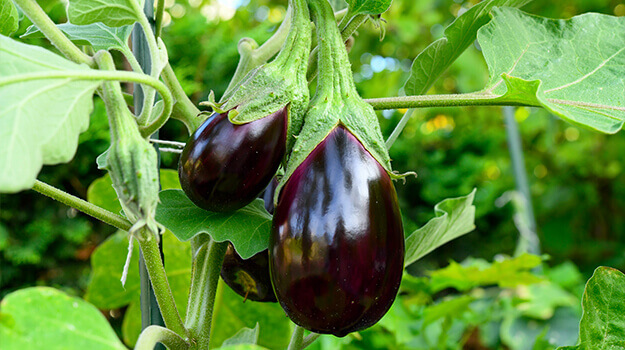
Vegetables are grouped into two categories according to their life cycle, the first being fast-growing, the others slow-growing.
Long-cycle vegetables (tomatoes, peppers, eggplants, etc.) rarely allow more than one planting during the same season. However, we can do this with short-cycle vegetables since they mature quickly (but die just as quickly!).
Short-cycle vegetables include beans, radishes, peas, broad beans, lettuce and spinach. Because of their rapid growth, they can often be re-sown in the garden every two to three weeks to obtain continuous harvests until frost.
How to use the sowing calendar
The sowing calendar is a practical tool for knowing when to start indoor or outdoor sowing. It needs to be used with a certain flexibility since the date of the last frost varies from one year to the next.
Also note that the calendar should be adapted to your region and hardiness zone. Otherwise, it will be necessary to consider the prevailing temperature differences.
Consult our sowing calendar by clicking here.
Simultaneous plantings or simultaneous sowing
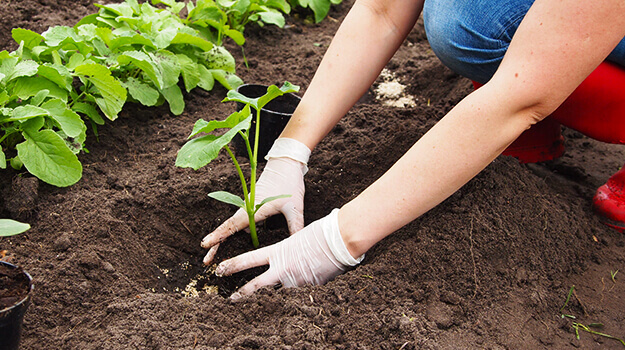
Another technique for extending harvests is to plant early-maturing, mid-season and late-maturing varieties of the same type of plant simultaneously. They will ripen successively, giving you a fresh, continuous harvest with just one planting session.
Seed packets indicate whether the varieties they contain are early, medium or late-maturing. Once again, if your gardening season is long, your harvest period may extend further and the later varieties will have time to mature.
If this is your first experience, this technique is easy to do with corn and peas.
We obviously have less choice with vegetables that take longer to mature, such as tomatoes. Even if the harvests will be done later in the season, it is nevertheless possible to obtain earlier varieties and others later, as noted above.
Perennial vegetables: high-yielding and hassle-free
Perennial vegetables are also a high-yielding option since they grow year after year, often without requiring any intervention. In our northern regions, these are obviously limited. However, there are asparagus and rhubarb (yes, it’s a vegetable).
You plant them once and they come back faithfully every spring, each time bigger and increasingly more productive. They are maintenance-free, well acclimated to their environment and only ask for one thing, to be left in peace!

